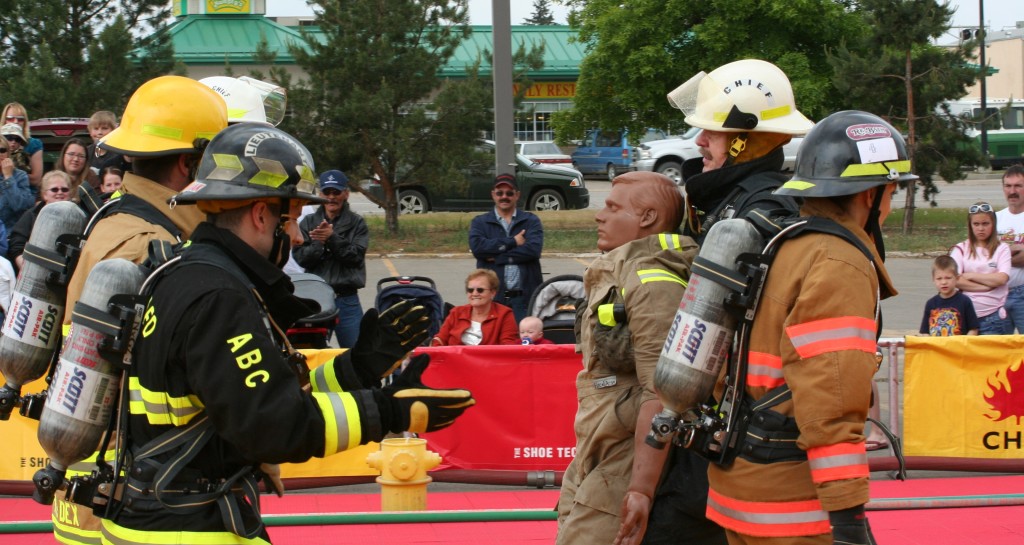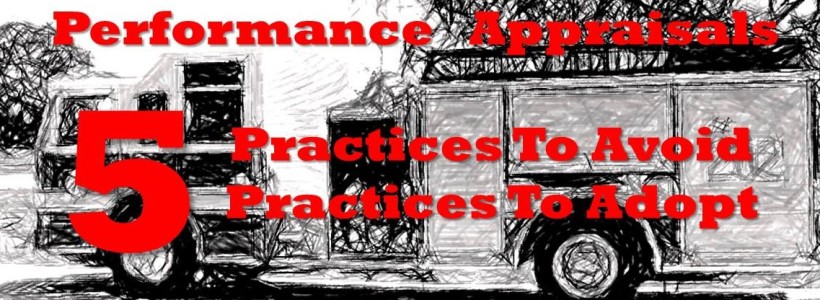Do’s & Don’ts For Performance Appraisals: 5 Practices To Adopt – Part 2
“People don’t mind being challenged to do better
if they know the request is coming from a caring heart.”
— Ken Blanchard
Firefighters grow when they follow great leaders, but they also grow by participating in regular performance appraisals. Performance appraisals are a great (and necessary) tool to develop future greatness in firefighters, but when conducted improperly they can damage a firefighters motivation for the profession.
These five steps can help any officer conduct a performance review and build confidence in the process.
5 Practices To Adopt
#1 – DO be prepared
Remember the “be prepared” mantra of the Boy Scouts and be prepared. Review the performance assessment at least a week in advance and make notes where firefighter strengths can be clearly identified. Being prepared means giving clear examples where the firefighter shone and met or exceeded expectations. Being prepared also means identifying weaknesses while keeping focused on the behaviors and not the firefighter.
 Don’t forget that being prepared is also important for the firefighter. A copy of the performance assessment should be given to the firefighter days before the official meeting so he or she can review and be prepared for the meeting.
Don’t forget that being prepared is also important for the firefighter. A copy of the performance assessment should be given to the firefighter days before the official meeting so he or she can review and be prepared for the meeting.
This simple act removes a great deal of stress of the unknown and lets the firefighter feel part of the process rather than being an appointment in the officer’s calendar.
#2 – DO understand the difference between an appraisal and regular feedback
Do understand that there is a difference between an official performance appraisal and regular positive feedback. The official appraisal follows a formal outline and is placed in the firefighter’s personnel file. The unofficial performance appraisal (regular feedback) happens every shift and is focused on regular encouragement and feedback focused on building excellence in the firefighter.
Notice: The regular feedback is conducted during each shift and not once a year.
#3 – DO identify the core appraisal message
Do identify the single most important message that you want to send to the firefighter during the performance assessment. If you are looking to build confidence in the firefighter, then focus on that theme throughout the appraisal. If you want to stress the importance of displaying a positive rather than a negative attitude, then focus the appraisal on the essence of having a positive attitude and the numerous benefits from such an attitude.
#4 – DO build upon strengths
Do build upon the firefighter’s strengths. There will always be a firefighter who just isn’t happy and may be causing some issues in the department. Look for his or her strengths and connect them to the single most important message you want to give the firefighter.
Firefighters generally remember positive feedback and use it as self-motivation, while negative feedback scars an attitude and diminishes enthusiasm for the profession.
#5 – DO Care
Do care about building excellence in the firefighter during the performance appraisal. The appraisal is a tool where the officer and the firefighter can spend time talking and exchanging ideas to build goals together.
Taking the time to build excellence is a sure way of building a trusting relationship and a trusting relationship builds the team.
In order to build excellence, an annual performance review should be conducted on every career, paid on call, and volunteer firefighter.
We generally fear the unknown but understanding the “do’s and do not’s” can help the officer conducting a performance appraisal. Try these steps, go slow, be prepared and have confidence in yourself.
Photo courtesy of Les Karpluk.
Read the complete series here:





